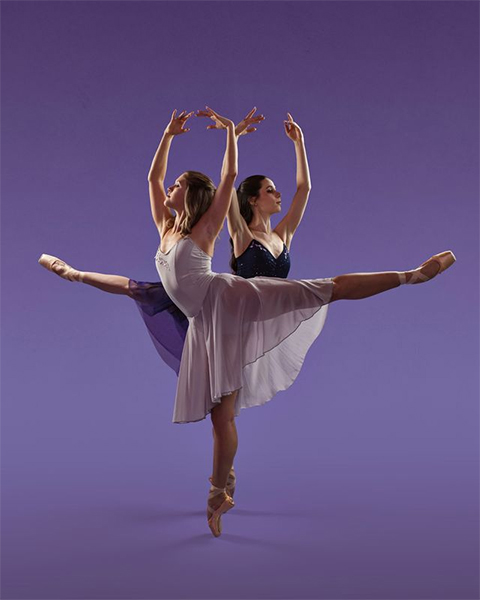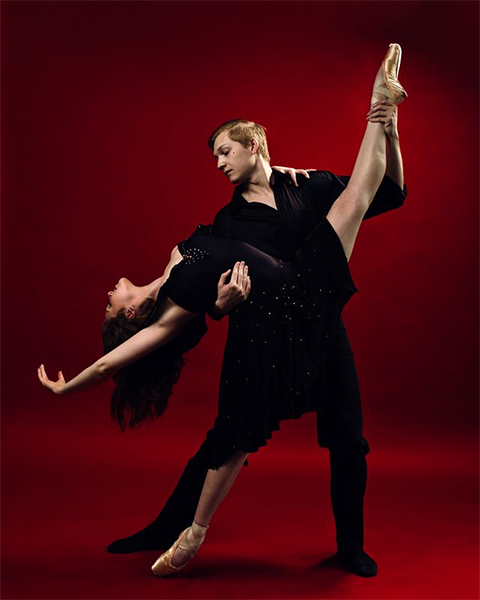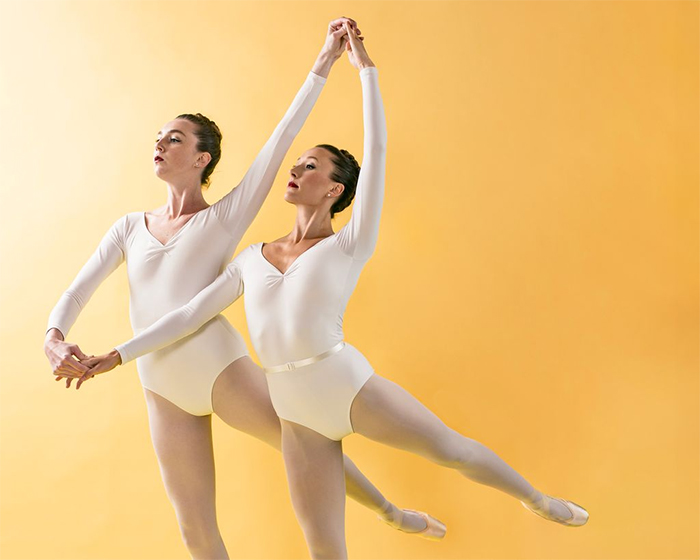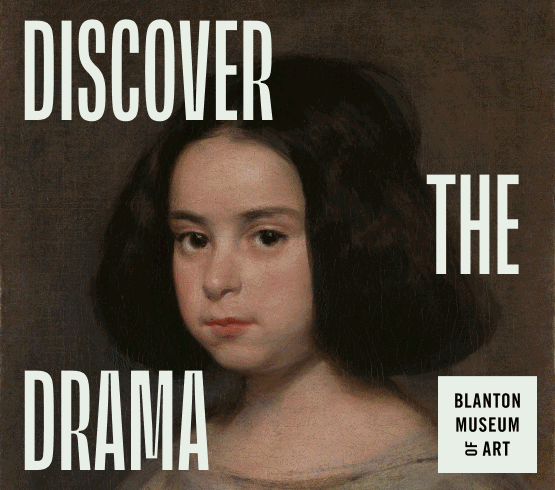When Katie Puder incorporated her Dallas-based ballet ensemble in 2012, she thought long and hard about what to name it. “I didn’t want to put my name on the company because my vision for it goes well beyond myself. I also didn’t want to give it a place name since that would be limiting,” she recalls. Then, inspiration struck. She came up with a name that encapsulates the company focus: Avant Chamber Ballet. “Avant means forward thinking, and that is my idea for the company—what does modern ballet look like now?” she muses. Regarding the size of ACB’s ensemble – fourteen dancers – she notes, “We are a company of very strong artists, focusing on new works, and small enough so we can say ‘yes’ to many different projects.”
ACB’s 2024-2025 performance season at the Moody Performance Hall in Dallas demonstrates core company precepts: to present new dance works performed to live music that feature accomplished artists.
Puder’s world premiere of The Princess and the Pauper (Sept. 21-22) is, “a very modern retelling of the story through the use of technology and the creation of an immersive environment.” ACB collaborates with Lightware Labs to provide an atmospheric experience using projections throughout the entire performing space during this full-length ballet. The storyline of the ballet emphasizes “our shared humanity and empathy,” and the specially designed costumes have a minimal, contemporary flavor. Puder is consulting with the Cezanne Quartet to select the musical scores that will highlight the humanistic theme of this new ballet.
With a nod to tried-and-true favorites, The Nutcracker with Live Orchestra (Dec. 6-8) features Paul Mejia’s original choreography and an ensemble of nearly 100 children. Mejia, a former dancer with the New York City Ballet, crafted a story ballet reminiscent of NYCB’s iconic The Nutcracker. Puder describes Mejia’s ballet for ACB as, “a classical story and what we in America would know as the traditional Nutcracker.”
“From the dancers’ point of view, it is very rewarding—there are no throw away roles,” says Puder. “There are no gimmicks and that comes across to the audience; everything is very genuine and honest.”

1 ⁄4
Avant Chamber Ballet’s Caroline Atwell and Sydney May; Photo by Jordan Fraker.

2⁄4
Avant Chamber Ballet’s Olivia Mann and Diego Miranda-Monsman; Photo by Jordan Fraker.

3 ⁄4
Avant Chamber Ballet’s Melissa Meng in The Nutcracker. Photo by Jordan Fraker.

4 ⁄4
Avant Chamber Ballet’s Kaylee Skelton and Mackenzie Bartlett; Photo by Jordan Fraker.
Love Stories (Feb. 14-15) marks a decade of ACB presenting a program of women’s commissioned choreography. Puder is passionate about addressing gender inequity in leadership, pay, and choreography in ballet. While she acknowledges that great strides have been made in these areas, “Ballet is still a male driven art form when you notice who the loudest voices in the room are.”
To nurture female talent, Puder keeps her eyes out for notable and emerging choreographers on the national scene. This year, she has selected Christina Ghiardi of the Nevada Ballet Theatre and Fernanda Oliveira of the Philadelphia Ballet to share the bill with her for this program of contemporary ballet featuring women’s points of view. She maintains the program offers “a spectrum of new works as broad as you will see anywhere across the country in that these choreographers are expanding the definition of what ballet is.”
This season is also an appropriate time for Puder and ACB to reflect on where they have come from and where they are going. From its modest beginnings as a project-based, pickup company in 2011 to its current status as a full-fledged nonprofit arts organization with salaried dancers, ACB celebrates another milestone this season: All performances are held in the Moody Performance Hall. She adds, “We are so happy to be in the Moody! There is not a bad seat in the house; it’s our forever home, probably.”
-TARA MUNJEE





